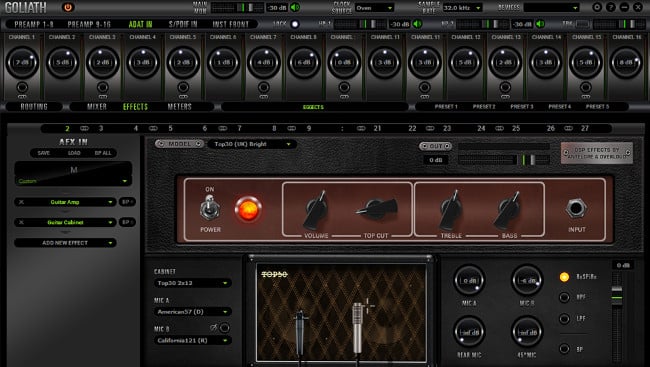
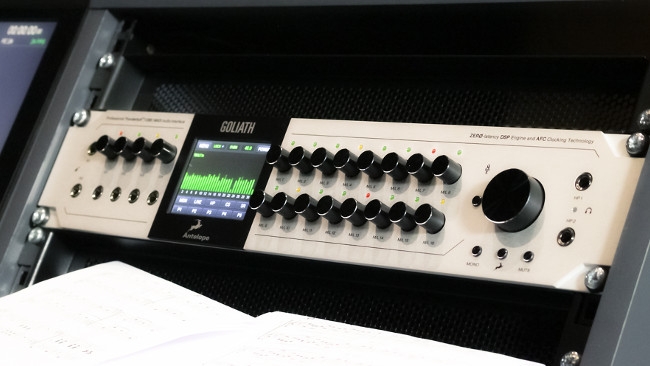 Antelope Audio Goliath
Antelope Audio Goliath
We profile the Goliath from Antelope Audio, a large interface that offers ample features and connectivity options for the premium professional market.
In a year that has already seen some giant interface launches at the upper echelons of the market, Antelope Audio's naming of its new flagship interface certainly gives it a lot to live up to. Yet, one glance at the front of this behemoth will tell anyone that the company certainly means business, as the design brief appears to have been one of "go ahead and create your ultimate recording solution" in a single unit.
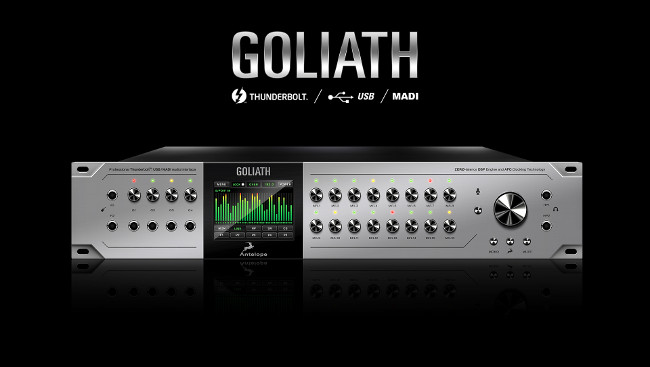 Antelope Audio Goliath Front Panel
Antelope Audio Goliath Front Panel
Central to the front panel is the touchscreen display, allowing you in-depth control of the interface. The front panel also houses four Hi-Z instrument inserts alongside two transformer preamp outs for quick patching, as well as two headphone outs with integrated talkback controls.
The back panel is awash with connectivity, giving us 16 channels of class A mic preamps along the lower half, then two stereo inserts and the ability to directly connect an additional 24 outputs and 16 line inputs. If even more inputs are required, the madi functionality can be utilized to allow connection of an additional Orion 32 convertor, taking the available I/O count up to a total of 64 channels both in and out.
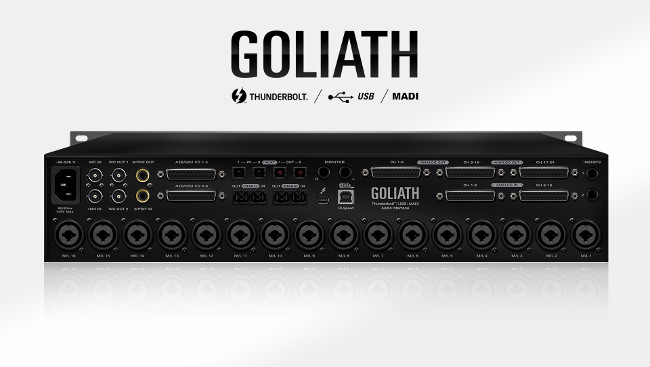 Antelope Audio Goliath Rear Panel
Antelope Audio Goliath Rear Panel
Antelope's own standalone clocking solutions are well-regarded and the Goliath is certainly no let down here. It finds itself driven by the same proprietary 'Acoustically Focused Clocking' jitter system that is found in the company's crystal based master clocks, The Goliath also features an oven-controlled crystal oscillator setup, designed to keep the crystal frequency at a tightly controlled constant, using technology more often found in military grade hardware and research labs. A good clocking solution helps to ensure the interface is able to deliver accuracy, depth and detail to the sound reproduction. The interface also has the ability to drive two further devices from the Antelope via BNC connections as an added bonus.
All that functionality offers an attractive package, but its some of the additional features that really set it apart. The Goliath employs a custom FPGA-based DSP engine to handle the mix processing and additional effects with a promise of zero latency. Antelope has partnered with guitar modeling software house Overloud Audio Tools to build in its amp modeling and effects, so that guitar players can build their own chains to be used in real-time. Also on show is Antelope's new RealModel technology, designed to create the accurate modeling at the component level of classic analog gear and offering a selection of classic Reverb, EQ and Compressor options.
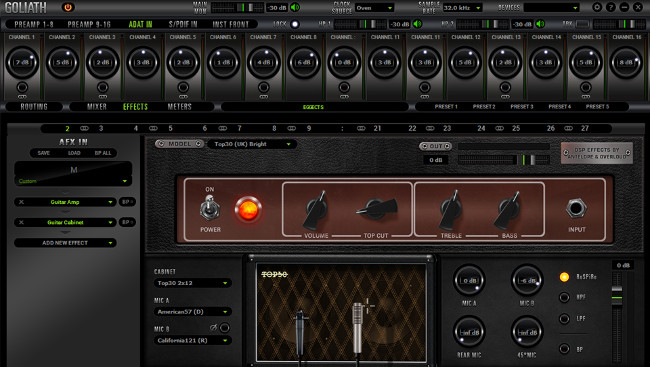 Antelope Audio Goliath Amp Sim Effects
Antelope Audio Goliath Amp Sim Effects
For system connectivity ,we have Thunderbolt, USB and MADI, with Thunderbolt being key to some of the higher track count configurations, as well as benefiting from super low latency performance. The interface can be remote controlled over the network by any Windows or Mac OS system or even your choice of Android or IOS device, allowing for further ease of control whilst recording.
Tags: Audio


Comments